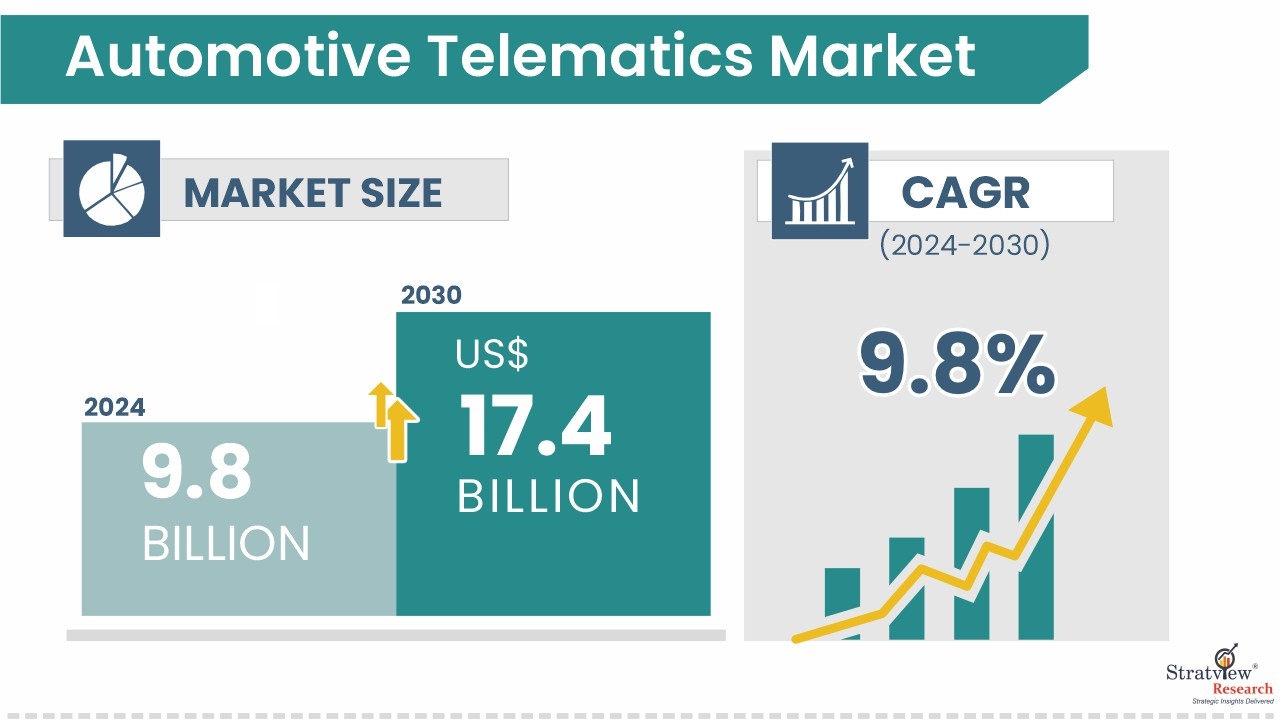The Role of Automotive Telematics in Smart Cities

Automotive telematics is playing a crucial role in the development of smart cities, where connected vehicles and smart infrastructure work together to enhance traffic management, sustainability, and mobility solutions. By enabling real-time communication between vehicles, infrastructure, and city systems, telematics is paving the way for more efficient, sustainable, and intelligent urban environments.
Stratview Research predicts the Automotive Telematics Market will grow at a CAGR of 9.8%, reaching USD 17.4 billion by 2030, with smart city projects driving significant demand for connected vehicle technologies.
Request a sample report to preview our in-depth analysis:
https://stratviewresearch.com/Request-Sample/4077/automotive-telematics-market.html#form
Telematics and Urban Mobility
- Smart Traffic Management:
Telematics enables vehicles to communicate with traffic management systems in real-time. This allows for more efficient traffic flow, reduced congestion, and optimized routes for public transportation and private vehicles. - Vehicle-to-Everything (V2X) Communication:
V2X communication allows vehicles to exchange data with other vehicles and infrastructure such as traffic lights, road signs, and pedestrian crossings. This enables autonomous vehicles to safely navigate through urban environments, improving overall traffic safety and efficiency. - Sustainable Urban Mobility:
Telematics systems can optimize the use of electric vehicles (EVs) and shared mobility services in smart cities. These systems enable real-time fleet management, helping reduce the environmental impact of urban transportation and promote sustainable mobility.
Market Drivers for Telematics in Smart Cities
- Government Initiatives for Smart City Development:
Governments are investing heavily in smart city initiatives that include connected infrastructure, electric vehicle adoption, and intelligent transport systems. Telematics systems are essential for achieving the goals of these initiatives. - Increasing Urbanization and Traffic Congestion:
As urban populations grow and cities become more congested, there is an increasing need for intelligent solutions to manage traffic flow, vehicle emissions, and mobility in a sustainable way. Telematics is key to addressing these challenges.
Challenges in the Market
- Infrastructure Investment:
Building and maintaining the infrastructure required for connected vehicles and smart city solutions can be expensive. Coordinating between government bodies, private companies, and technology providers is essential for successful implementation. - Data Privacy and Security:
As connected vehicles generate large amounts of data, ensuring data security and privacy is critical. Developing systems that can safeguard data while still providing real-time services is a significant challenge.
Conclusion
Telematics is central to the development of smart cities, helping create more efficient, sustainable, and connected urban environments. As governments and businesses continue to invest in intelligent infrastructure and autonomous mobility solutions, telematics will play a key role in shaping the future of urban mobility.
- Questions and Answers
- Opinion
- Motivational and Inspiring Story
- Technology
- Live and Let live
- Focus
- Geopolitics
- Military-Arms/Equipment
- Segurança
- Economy
- Beasts of Nations
- Machine Tools-The “Mother Industry”
- Art
- Causes
- Crafts
- Dance
- Drinks
- Film/Movie
- Fitness
- Food
- Jogos
- Gardening
- Health
- Início
- Literature
- Music
- Networking
- Outro
- Party
- Religion
- Shopping
- Sports
- Theater
- Health and Wellness
- News
- Culture

